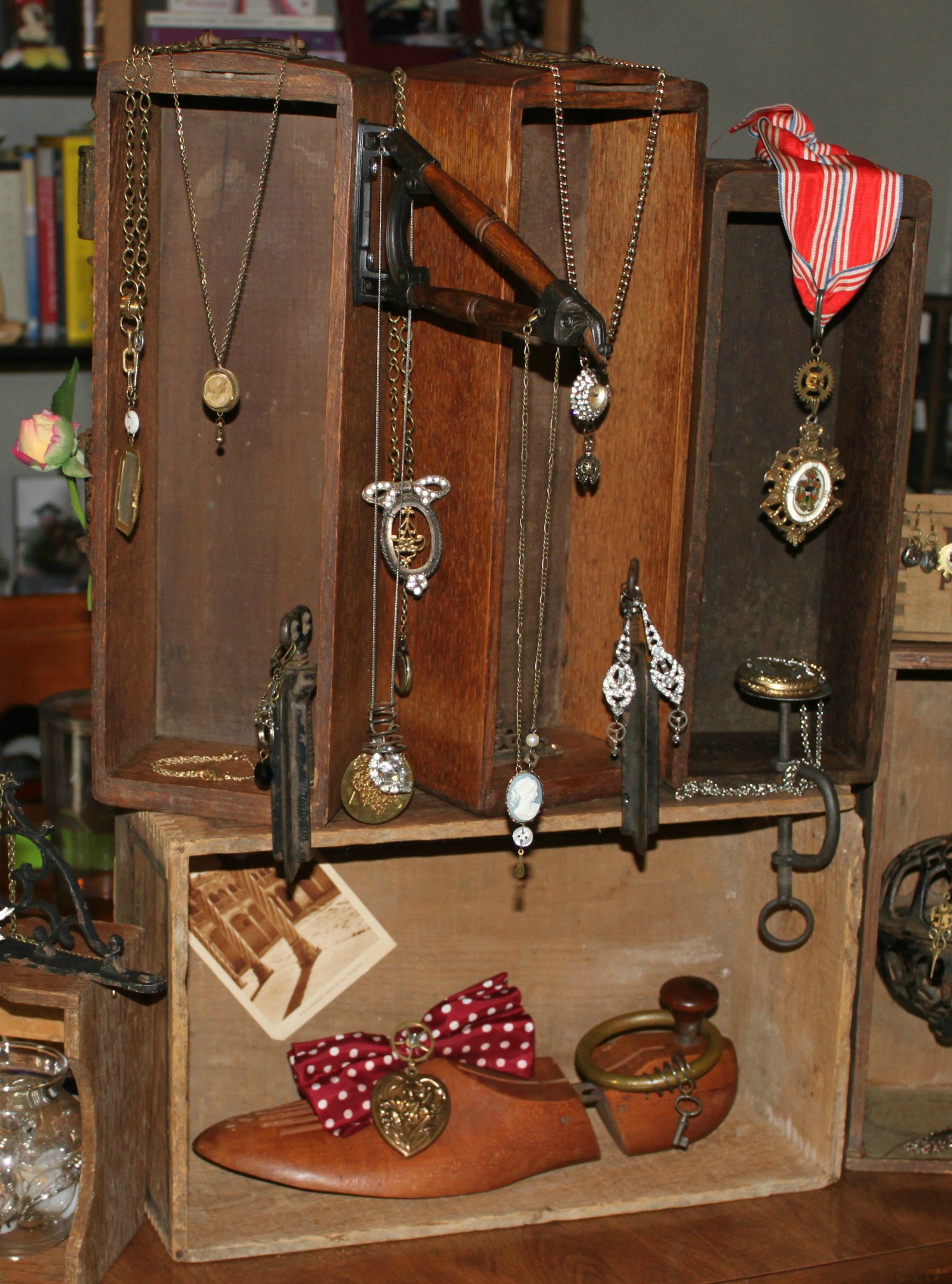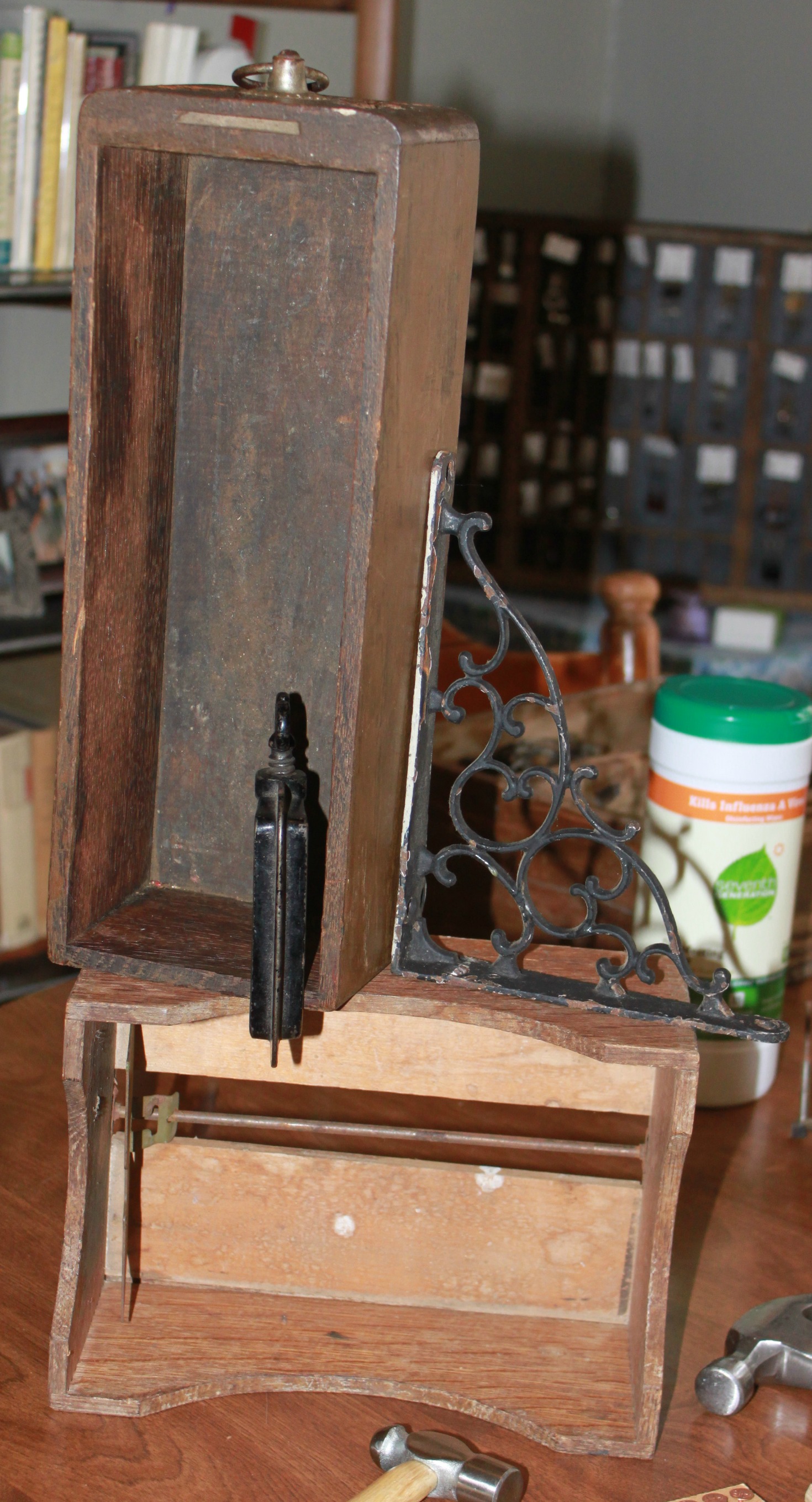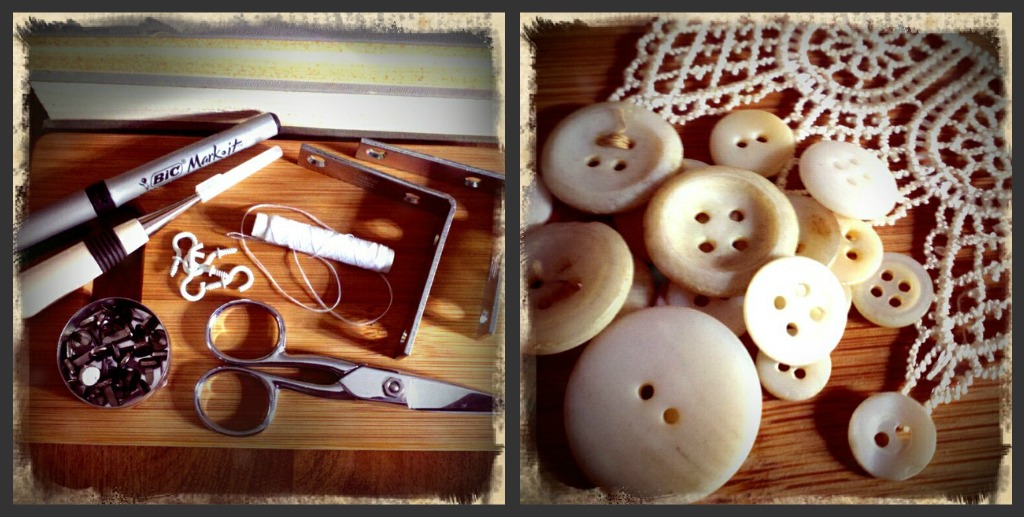I am obsessed with antique printer drawers! They are perfect for displaying jewelry as well as other small bits and bobs you might collect and wish to show off. On Etsy there are several sellers who have upcycled printer drawers for the purpose of jewelry display. Most sellers' prices are steep but of course this depends entirely on the condition of the drawers and the amount of work that converting them requires. I bought all 4 of my drawers for $100 at a local antique shop (each drawer came with a complete set of letterpress letters, numerical signs, punctuation & symbols). If you're local to Tulsa, you should drop by Sidedoor Antiques (located on Harvard Avenue between 15th and 21st street). Be sure to tell William I said hello!
I bought all 4 of my drawers for $100 at a local antique shop (each drawer came with a complete set of letterpress letters, numerical signs, punctuation & symbols). If you're local to Tulsa, you should drop by Sidedoor Antiques (located on Harvard Avenue between 15th and 21st street). Be sure to tell William I said hello!
Once you have found your drawer, then comes the hard part--cleaning, decorating, and fitting your drawer with cup hooks. This D.I.Y. is broken down into 3 parts. (Believe me, you won't get it all done in 1 day!).
Part One: Cleaning Your Drawer
This part is the most time consuming. The older your drawer, the chances are the dirtier it is (after all--they do contain letterpress parts that were frequently used and slathered with ink).
Cleaning Supplies:
- Method All-Purpose Disposable Wipes (Normally I would not suggest disposable anything, if you're like me you use rags for cleaning made from old socks and worn out clothing; however, cleaning each of the drawer's cubbies takes up a ton of rags (more than I had) and I did not want to just spread around dirt and ink--so just this once, use some wipes. Also with wipes, you do not run the risk of over-saturating your drawer with water.)
- Vacuum cleaner
- Razor blade
- Wood polish & rag
Steps:
1) Using your vacuum cleaner, suck any loose dirt, dust, or lint from each cubby. 
2) Once you are done, use a razor blade to scrape out the paper lining underneath each individual cubby. If your drawer does not have paper lining, then you can skip this step. If yours does, you should remove it. Each of my drawers had moldy paper lining because it had been wet at some time and not thoroughly dried out. If your drawer does have mold, please take care to cover your mouth and nose with a mask and wear gloves to protect yourself.
3) Once you've scraped away the paper lining, vacuum out the paper. Tweezers can be useful if you have paper that is stuck underneath the wood dividing the cubbies.
4) Wipe each individual cubby with a disposable wipe. Make sure to clean all four sides and the bottom of the drawer's cubby. Also wipe down the sides, bottom, and back of the drawer.
5) After your drawer has dried a bit, wipe down each cubby and the drawer's back and sides with wood polish.
Part Two: Decorating Your Drawer
These are just a couple of suggestions on how to decorate your drawer! Have fun with it!
1) Paint the cubbies with chalkboard paint (or any other kind of paint you like). Two of mine are chalkboard painted (another obsession)--I have fun writing little messages in each of the cubbies.
2) Line each cubby with cut-outs from old magazines, books, postcards, or vintage fabric scraps using modge podge.
3) Keep it natural and seal your cubbies with modge podge wood sealant for a natural sheen that protects your wood!

Part Three: Fitting Your Drawer
What is wonderful about converting your own drawer is customization. You can add cup hooks anywhere you wish. The drawer can be mounted on the wall or stand on your vanity table. Decide where you'd like to place your drawer and then begin to measure your drawer's dimensions so that you can fit it with the appropriate hardware.
Supplies You'll Need to Mount Your Drawer on the Wall:
- flat brackets
- screws (that fit into your bracket and do no exceed the depth of your drawer's wood)
- screwdriver or drill
- awl
- measuring tape
Supplies You'll Need for a Freestanding Drawer (on the Vanity):
- L-shaped brackets
- screws (that fit into your bracket and do not exceed the depth of your drawer's wood)
- screwdriver or drill
- awl
- measuring tape
For both kinds of drawer displays you will need cup hooks (or any other kind of hook you desire). Cup hooks are the easiest. The size depends entirely on your drawers dimensions.
Steps:
1) Measure your drawer's dimensions. Start first with its width (A) and height (B). Next measure its depth (C) and the width and height of each cubby (D). Not all of your cubbies are the same width and height so be sure to make note of that. Record each of your measurements.

2) Count how many cubbies your drawer has and record the number along with your other measurements. For the printer drawer I use as display for my business I only put one cup hook per cubby so that each pair of earrings or bracelet could be more easily seen. For my personal printer drawer (the one I use to hold and display all of my jewelry that I wear) I put 2 cup hooks per cubby where I could so that the drawer could increase its holding capacity. This is a choice that's up to you.
3) Using your screws and screwdriver, attach your brackets to the back of your printer drawer. I recommend attaching the bracket to a thicker part of your drawer for more stability. Obviously, if you are mounting your drawer on the wall--keep in mind how it will hang and likewise, if you are standing it up on your vanity, how it will stand when your brackets are in place. It's best to mark the spots where you'll want to screw in your brackets with pencil first before drilling. (You can also lean your drawer up against the wall if your prefer, as is pictured in BlueBirdHeaven's photo above).
4) Once your brackets are in place, use your awl and start a hole in each individual cubby and then screw in your cup hook.  Repeat (many, many times). You may also want to use a pair of flat nosed pliers to help you screw in the cup hook.
Repeat (many, many times). You may also want to use a pair of flat nosed pliers to help you screw in the cup hook. 
Part Four: Enjoy!
 Have fun putting all of your jewelry & tiny bric-a-brac in your new display! As always, Happy Making!
Have fun putting all of your jewelry & tiny bric-a-brac in your new display! As always, Happy Making!







































